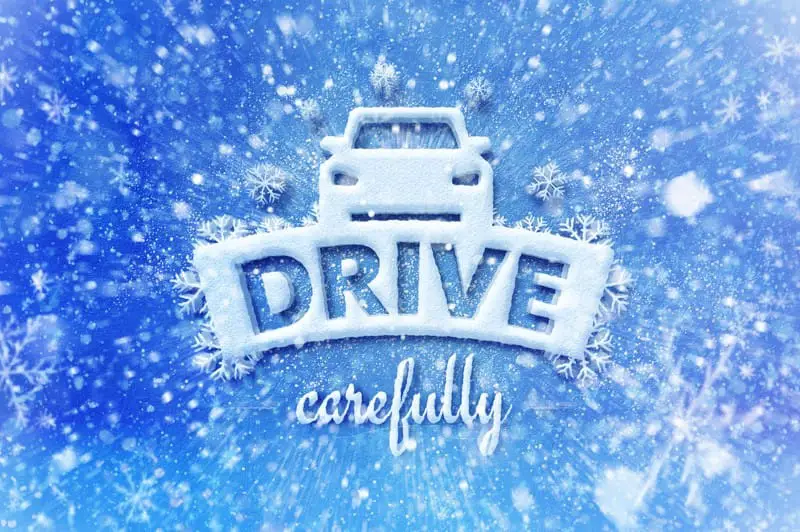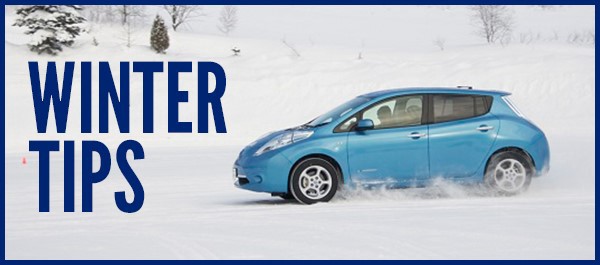Tips On How To Drive An EV During Winter
If live in a snowy winter climate, there’s a chance you’ll encounter rapidly changing road conditions and should prepare for a worst-case…

If you live in a snowy winter climate, there’s a chance you’ll encounter rapidly changing road conditions and should prepare for a worst-case scenario. Fill your car’s windshield washer tank with the non-freezing solution and stock the trunk with a small shovel, brush/scraper, and some flattened cardboard boxes or a large bag of sand or cat litter to help get your car moving if it becomes stuck on snow or ice. Fortunately, an electric car’s lower its center of gravity and even weight distribution helps bolster its traction on slippery surfaces. Those equipped with all-wheel drive perform even better in this regard.
When the snow begins to fall, be sure to turn on the car’s headlamps, reduce speed, and leave extra room between you and the traffic ahead — the brakes won’t work as well as they would on dry roads. Watch for frozen patches, especially on bridges and overpasses that tend to freeze quicker than paved roads. Avoid using the vehicle’s cruise control to keep your reaction times to a minimum.
If you’re coming to a stop and feel the brake pedal pulsating or chattering (and/or the “ABS” light is flashing on the instrument panel), this means the antilock function is activated. Maintain a firm foot on the pedal until the vehicle comes to a stop. If the stability control warning light flashes on the dashboard, that means the system is engaging to help counter wheel spin, and you should take it as a signal to slow down. If the vehicle begins to skid on a slippery spot or black ice, stay calm and steer in the direction you want to go, maintaining a light and steady foot on the accelerator. Slamming on the brakes when a car or truck is sliding sideways will only make things worse.
If you get stuck on snow or ice, disengage the car’s traction control system (there’s usually a dashboard button for this — check your car’s owner’s manual) as it tends to be counterproductive in this type of situation. Avoid spinning the tires to avoid digging yourself into a deeper rut. Instead, gradually “rock” the vehicle back and forth to get it unstuck. With the transmission in drive, slowly creep ahead as far as possible then engage the brakes, put the car into reverse and repeat the process back and forth several times to gradually get unstuck.
If this doesn’t work, throw several handfuls of sand or cat litter you prudently packed in the trunk under the tires to achieve just enough grip to get going. Otherwise, wedge sheets of cardboard or the car’s floor mats under the tires to help them catch. If possible, enlist passersby to help give the car a push. Otherwise, it’s time to call a tow truck to get you unstuck.

Here is some detailed explanation on what to do in case winter catches up with you without being aware or during winter:
i) Precondition - allows the owner to heat or cool the battery and cabin as needed. You should use the precondition function as much as possible, preferably while connected to a 240-volt charging source. By using preconditioning to preheat the battery and passenger cabin, you’ll leave with a fully charged and heated battery, plus a warm cabin. Preconditioning varies by model, so consult your owner’s manual for more information.
ii)Cabin Heat - Unlike ICE vehicles, there’s no waste heat from the combustion engine to heat the passenger cabin, so EVs need actual onboard heating systems. These systems are generally the biggest energy draw an EV will have, other than the propulsion motor.
Maximizing your range will mean limiting the use of the cabin heater as much as possible. Dress warmly so that you remain comfortable in the car. Make use of heated seats and steering wheel (if available) as much as possible, as these systems draw less energy than the onboard heater.
iii) Properly Inflated Tires-This might be the most overlooked way to increase your EVs range in the winter. As the temperature drops, the air in your tires contracts and the tire pressure falls.
Tire experts say that for every 10 degrees of temperature drop, your tires can lose 1–2 lbs of pressure. Under-inflated tires create more road friction, which will reduce the vehicle’s efficiency.
Always make sure to check the recommended and maximum pressure for your tires, because it’s different for every tire and car. Be sure to check your tire pressure frequently during the winter.
iv) Regenerative Braking-Using the regenerative braking system on your EV to maximize range is always a good idea. However, it can be an even bigger asset when you really need to squeeze out every mile of the range possible.
It’s also important to note that when the battery is very cold, the regenerative braking system will be less effective. Cold batteries can’t accept as much energy as warm batteries can.
v) Park Inside Or in Direct Sunlight-Whenever possible, park the car in garages, especially if they are heated. If you park outside for an extended period, like during work, try to find a spot that will be in direct sunlight.
By parking, in direct sunlight, you’ll have a warmer cabin and battery when you return to your car. Every bit helps.
vi) Charging Times Increase-Cold batteries won’t accept as much energy as warm ones will, so expect longer charge times. Also, if equipped, your car’s thermal management system may also be working to warm the batteries. The thermal management system takes some of the energy that would have gone directly into the battery so that it can extend the charge time also.
The simple act of charging the car warms the battery. So you may want to use the charge timer on your car, or on your EVSE, to make sure the charge ends right before your departure time.
vii) Use Eco Modes-Most EV have various operating modes. Eco-modes are designed to reduce energy usage, sometime by limited motor output and other times by reducing the amount of energy HVAC systems can use Eco modes can, therefore, extend the range of your electric car.




